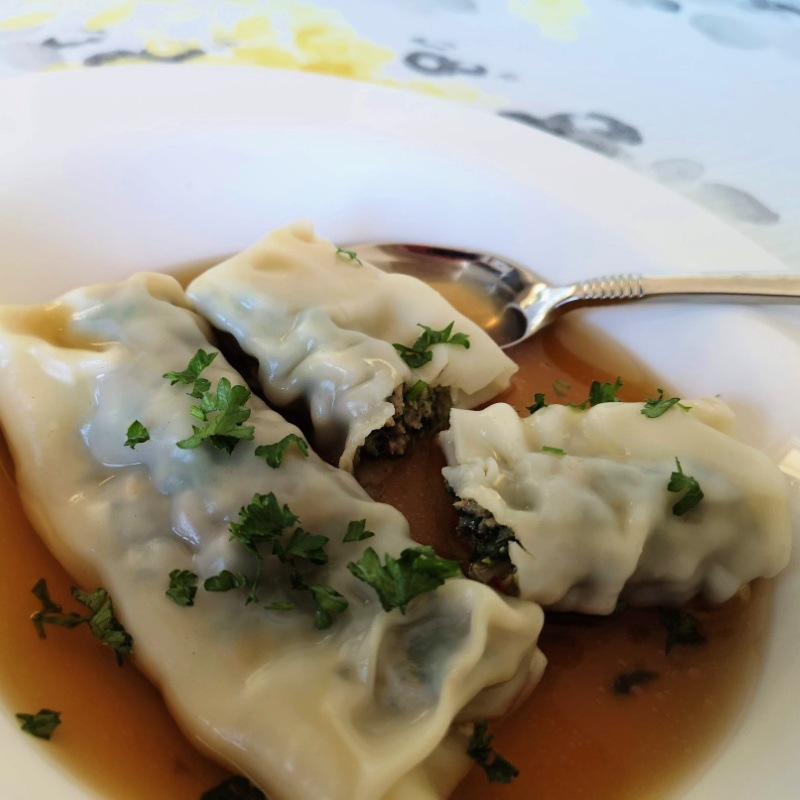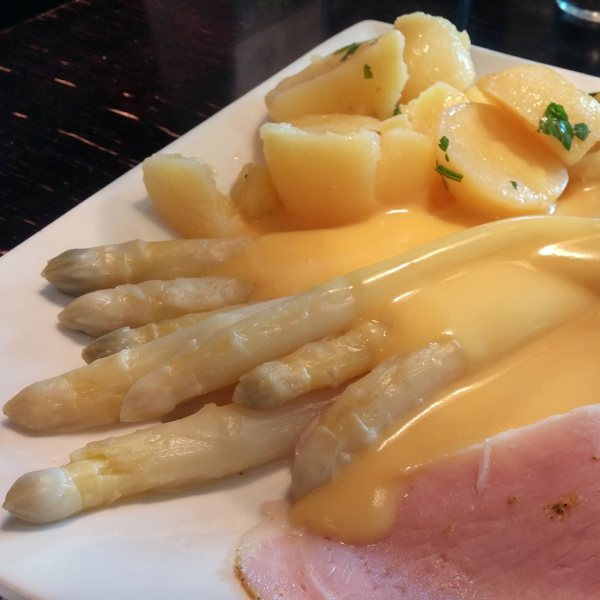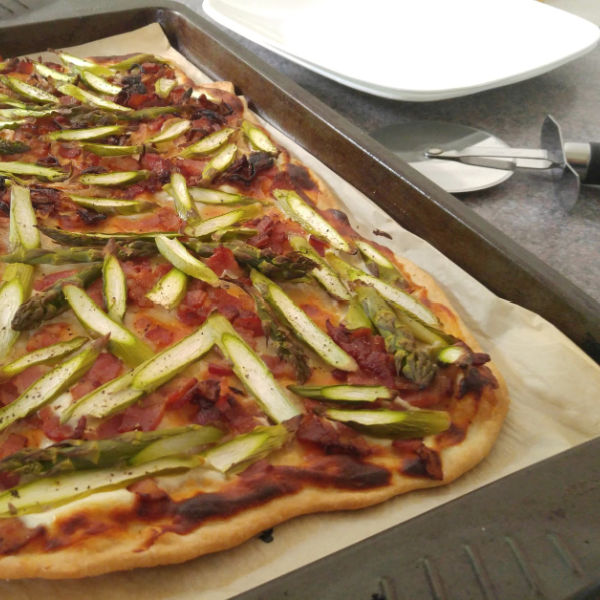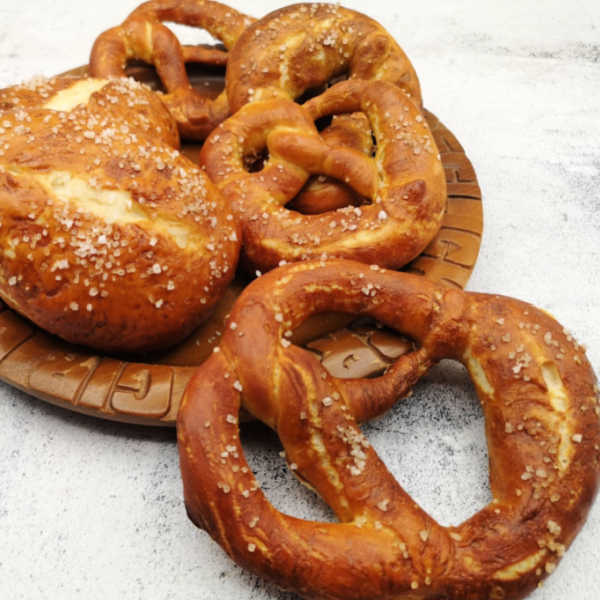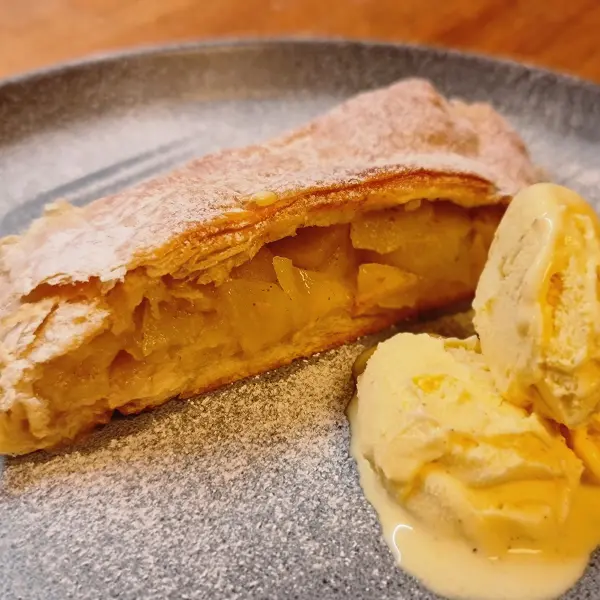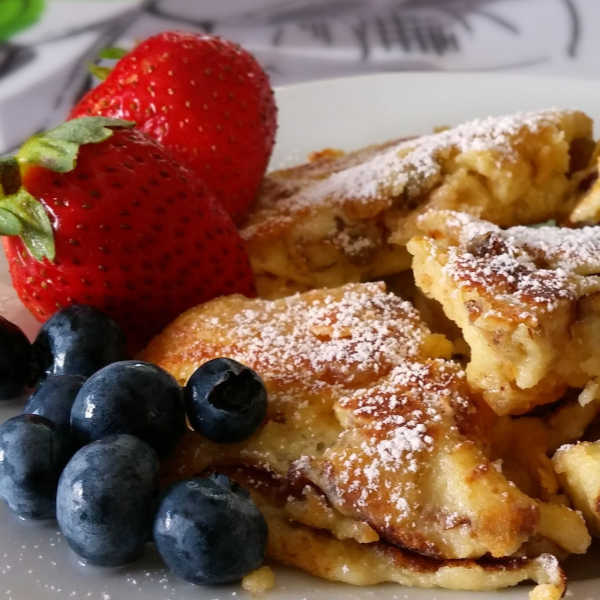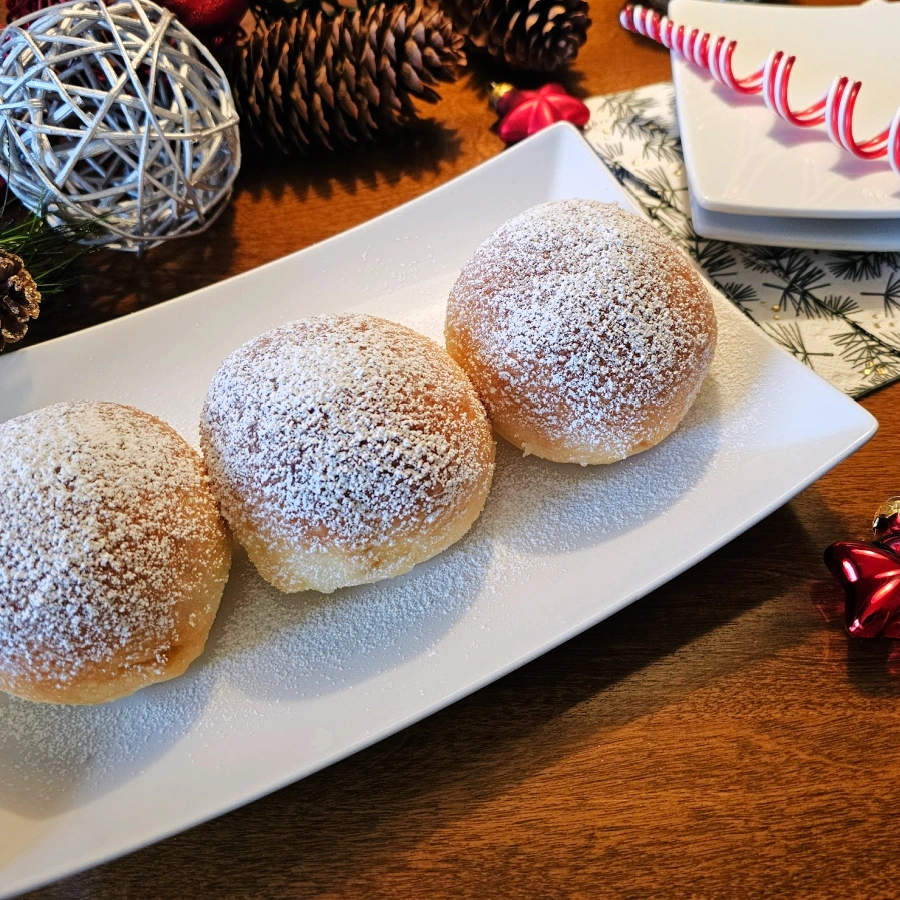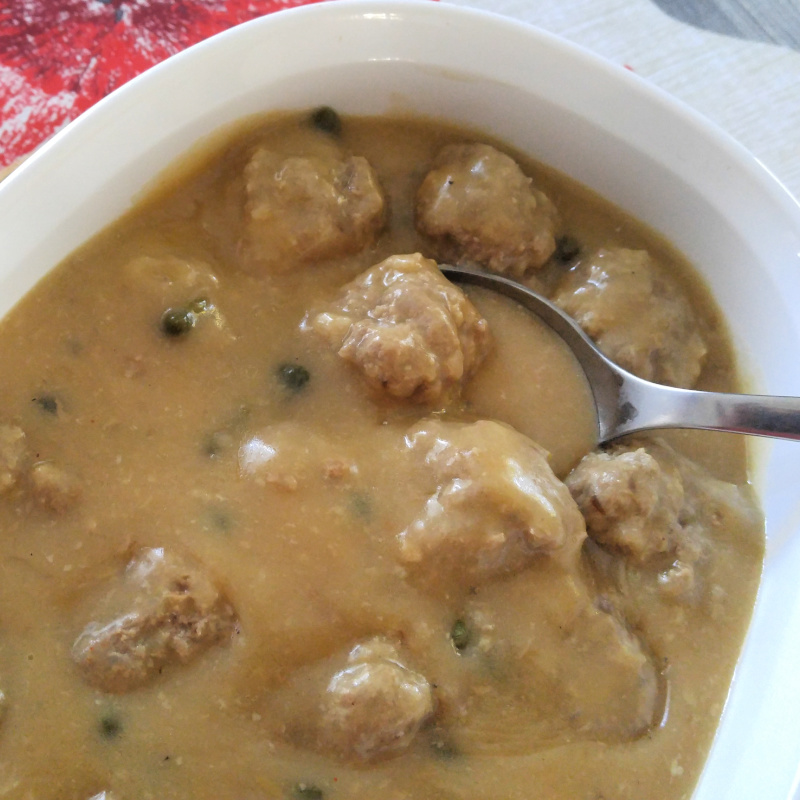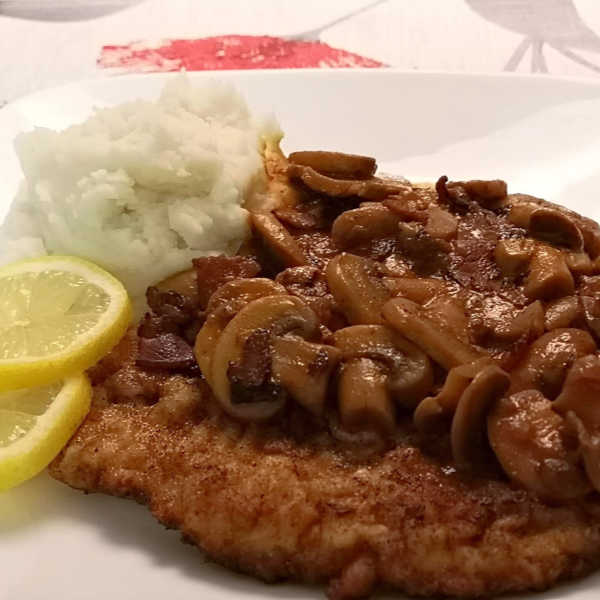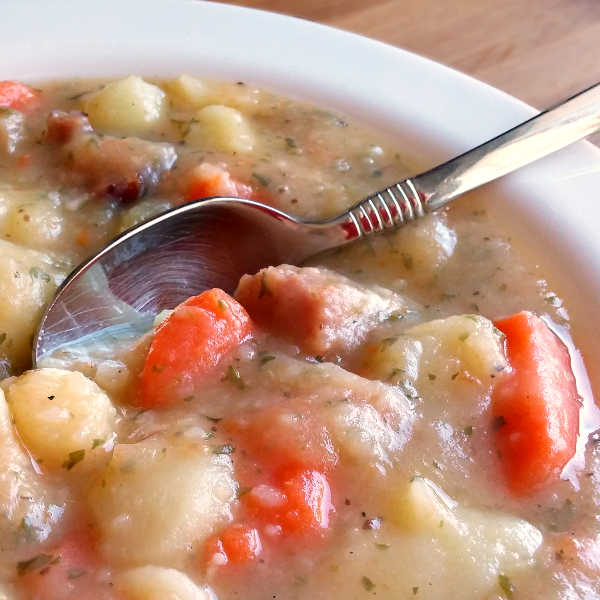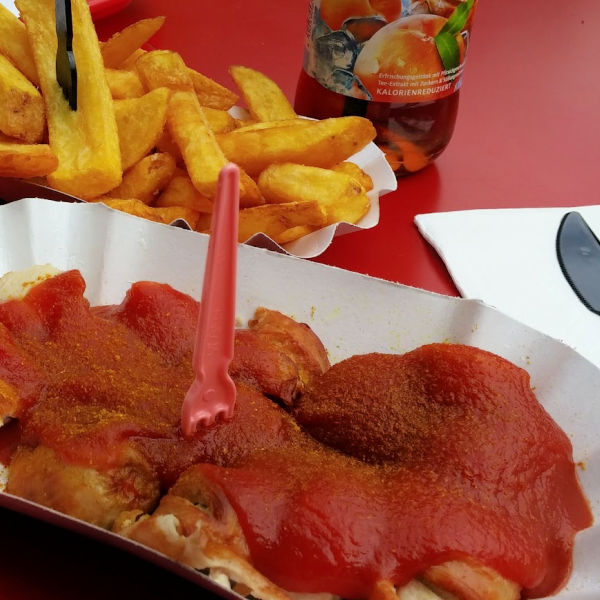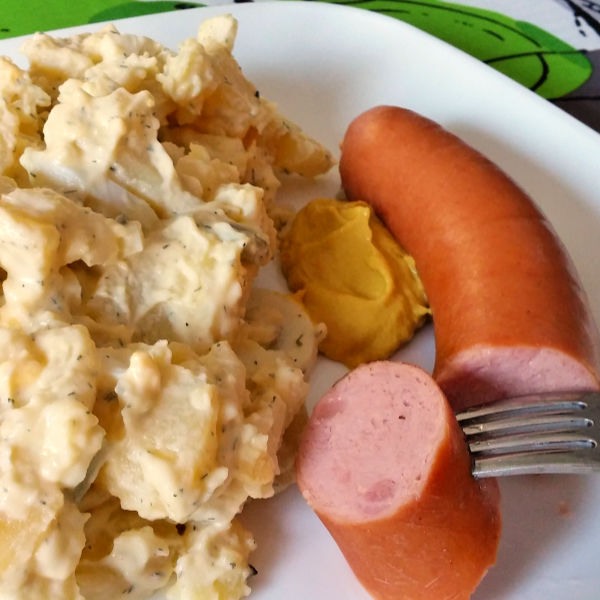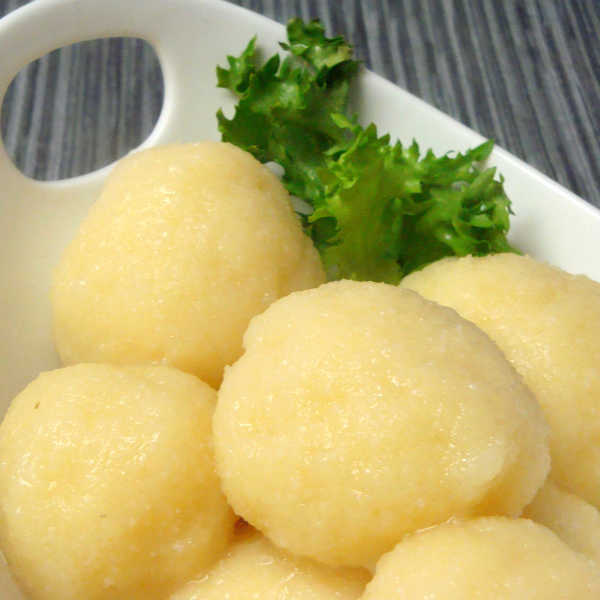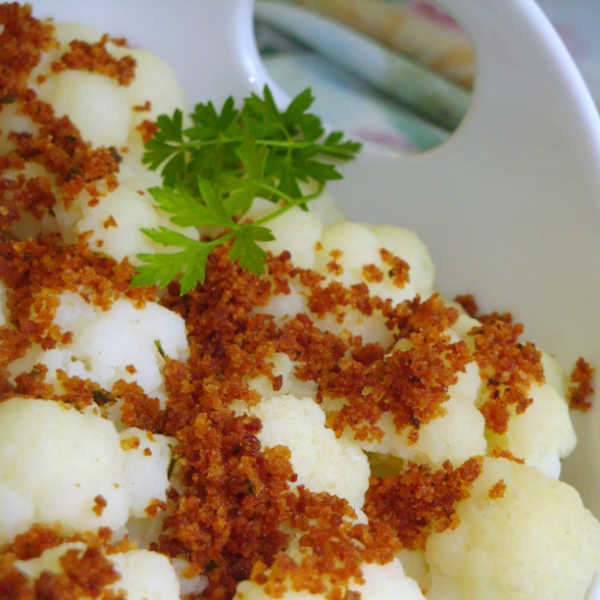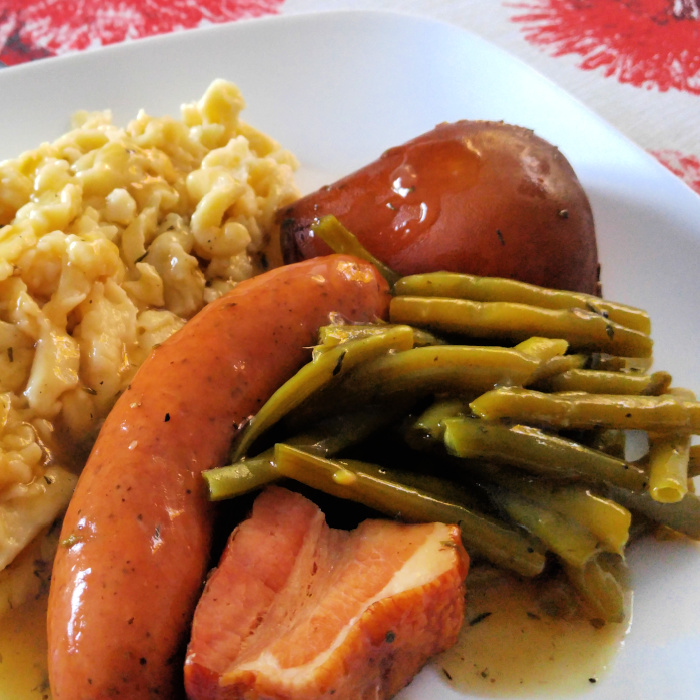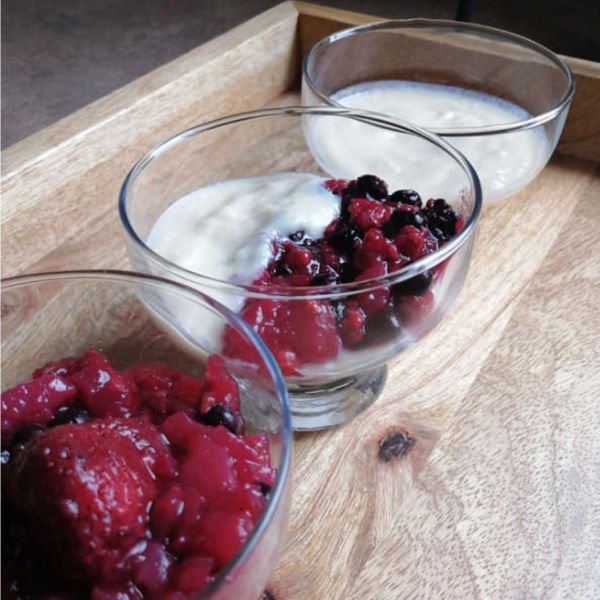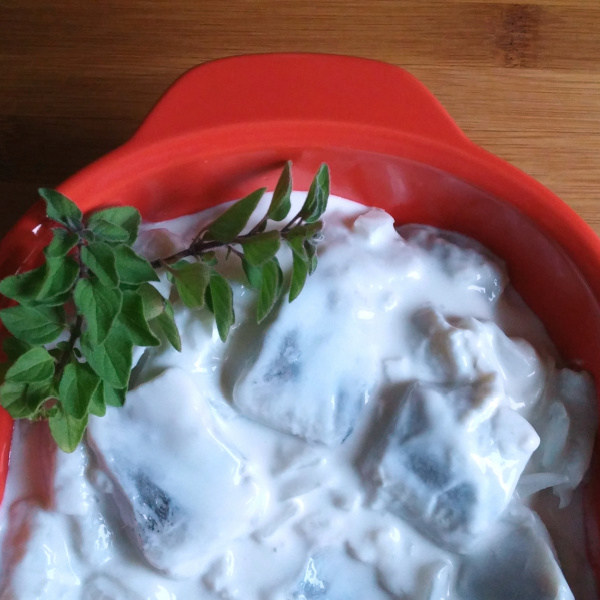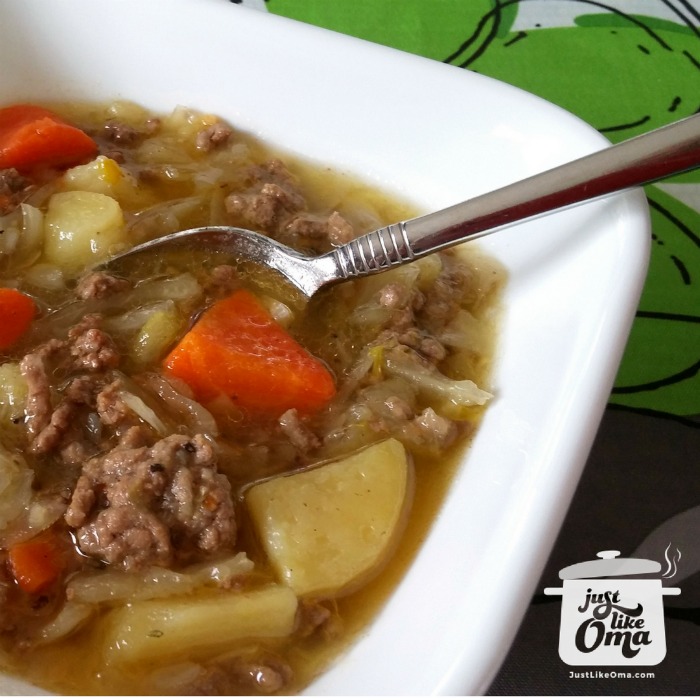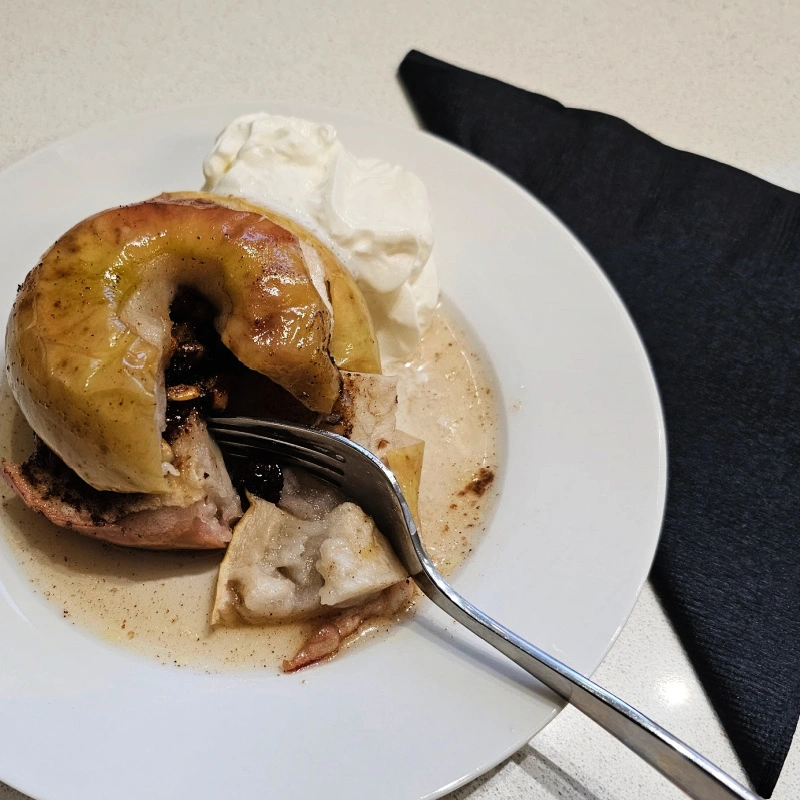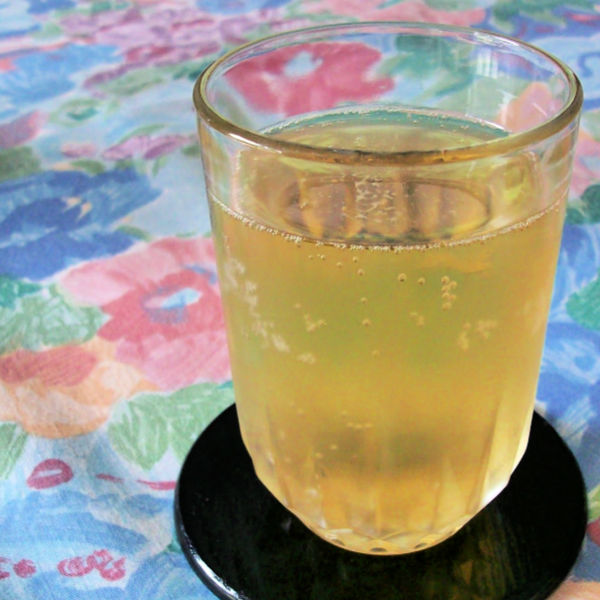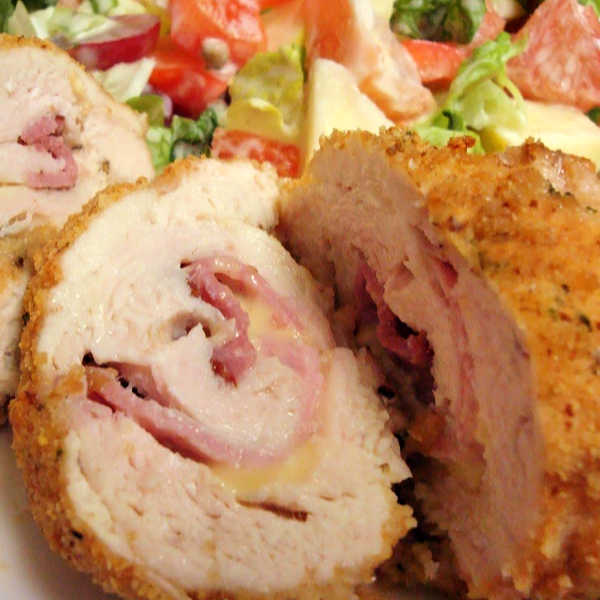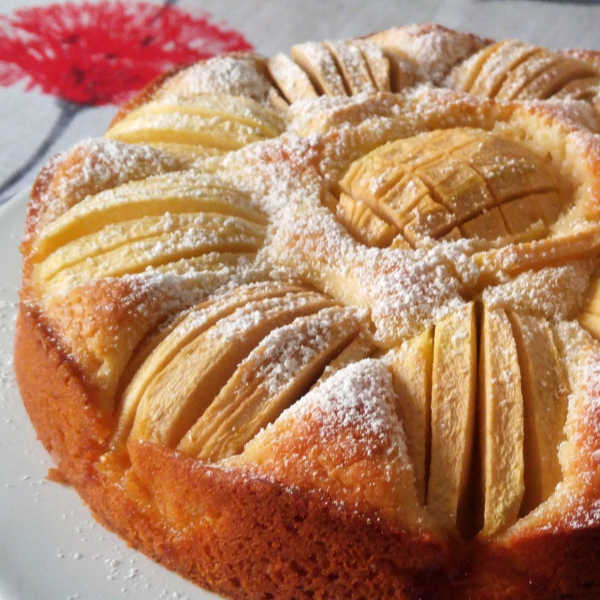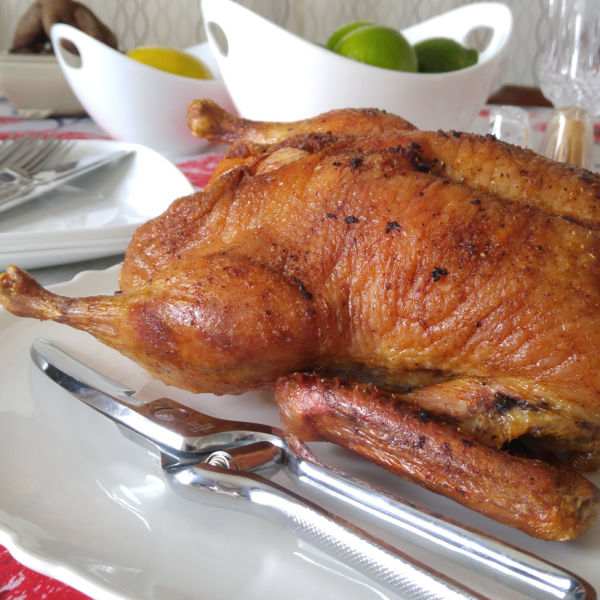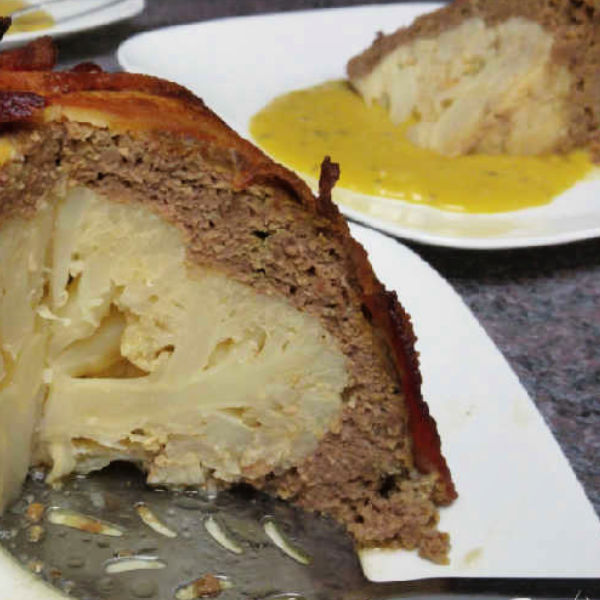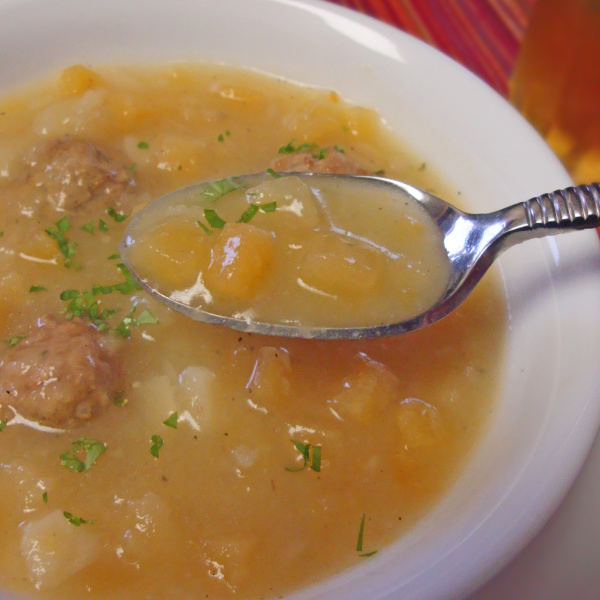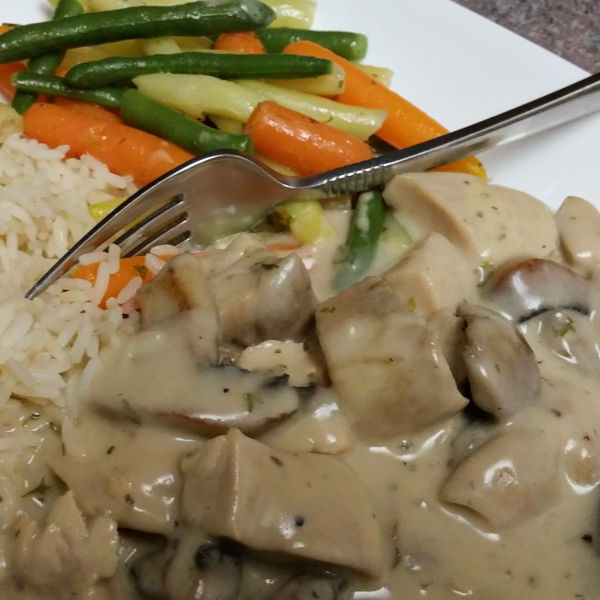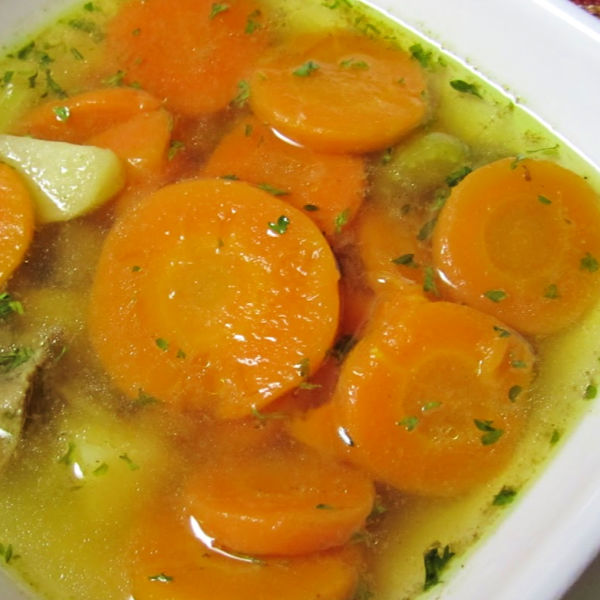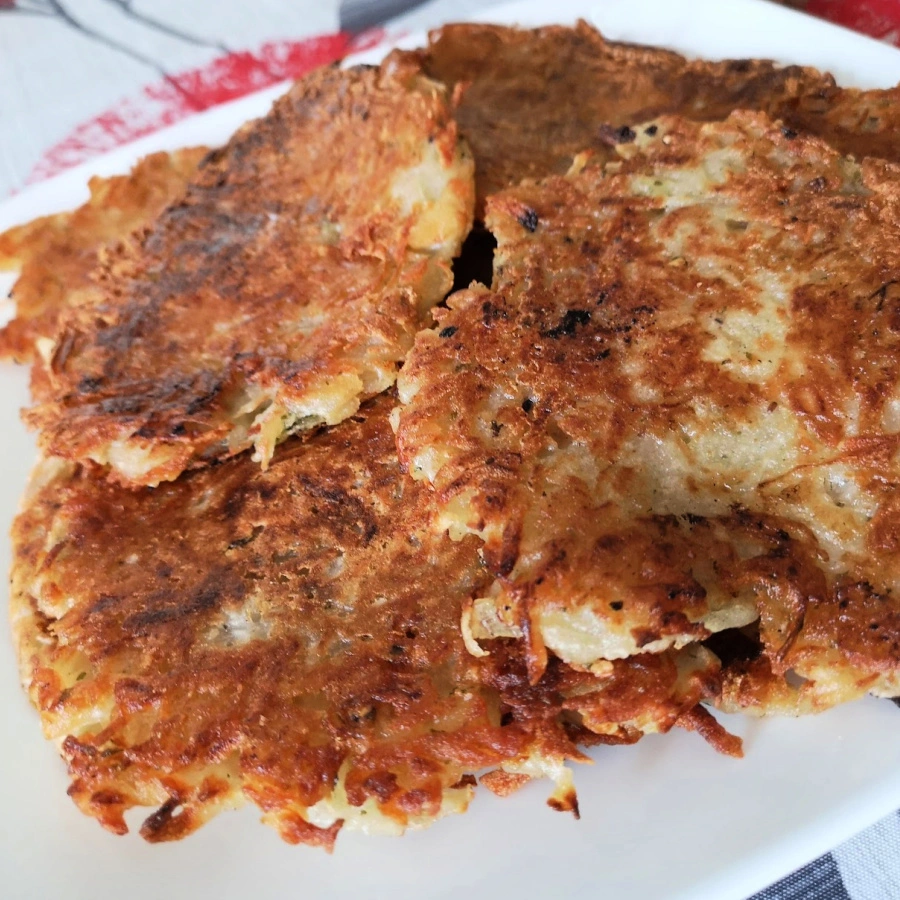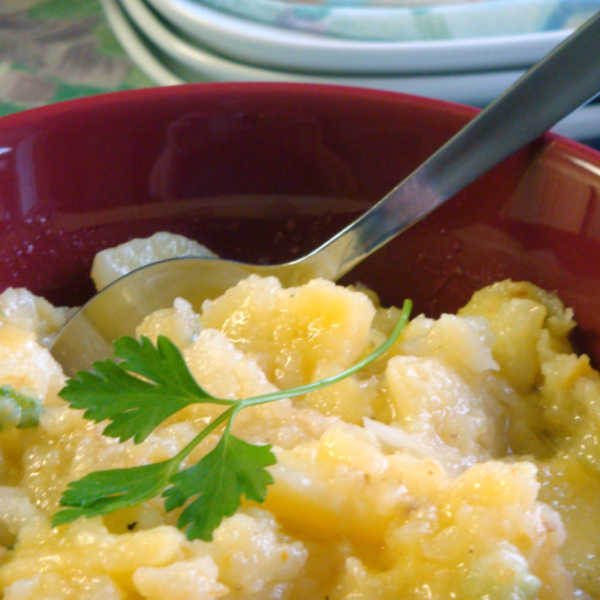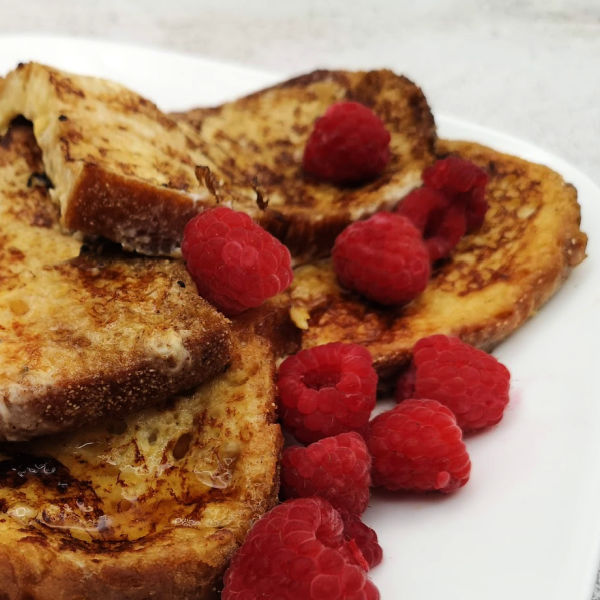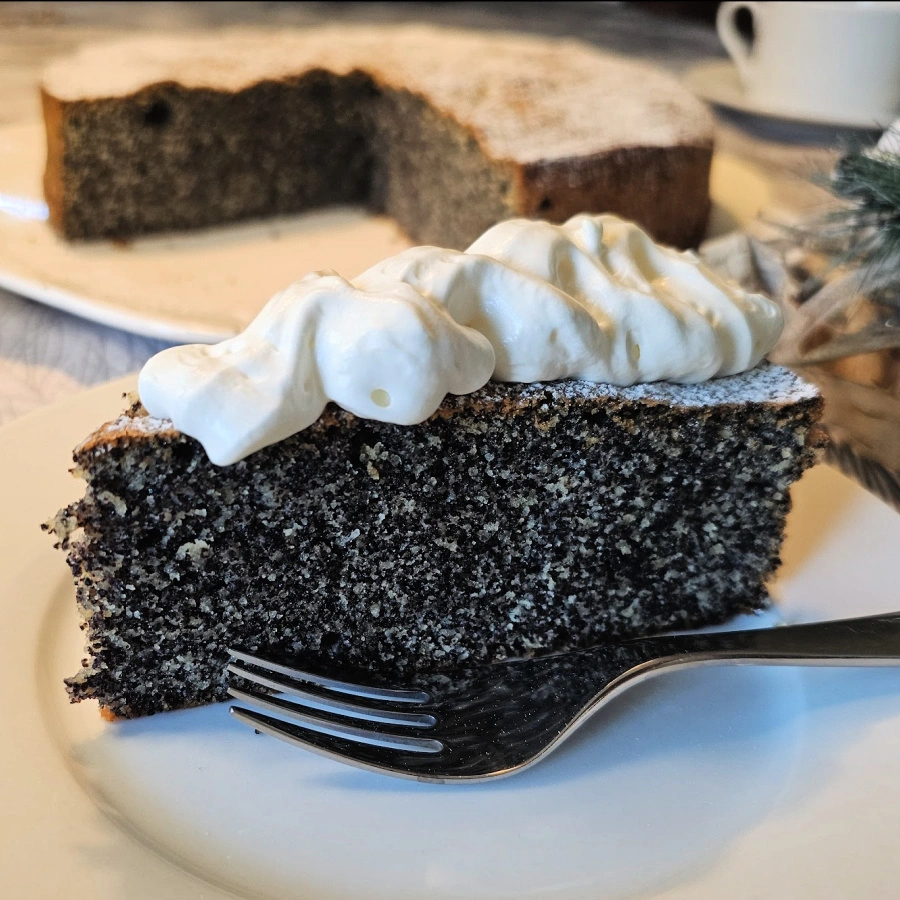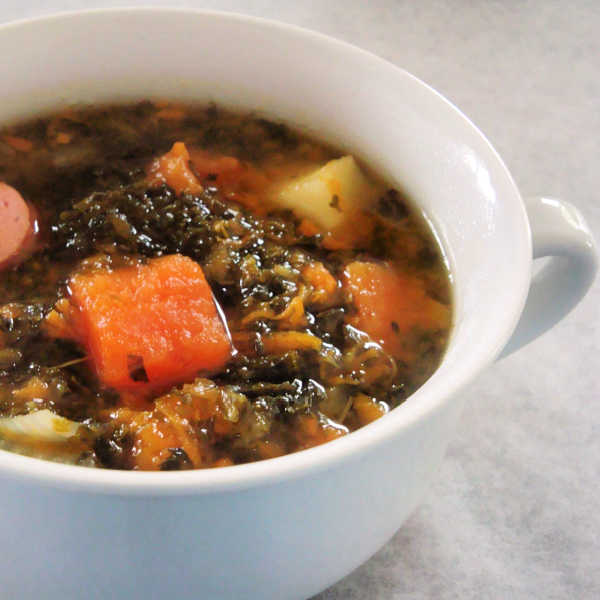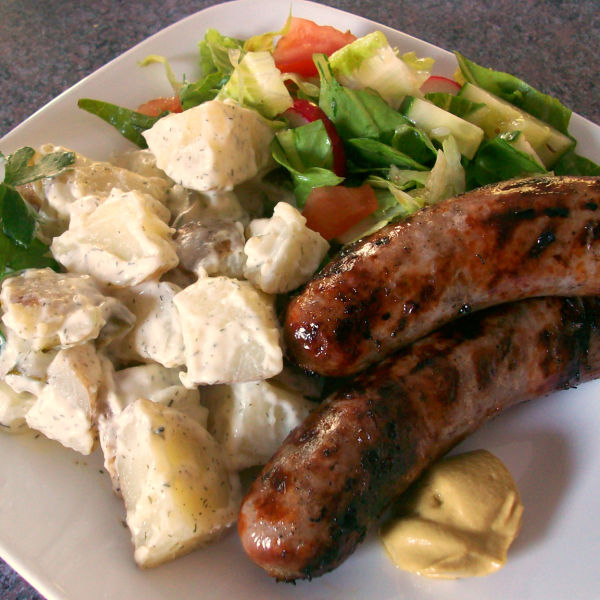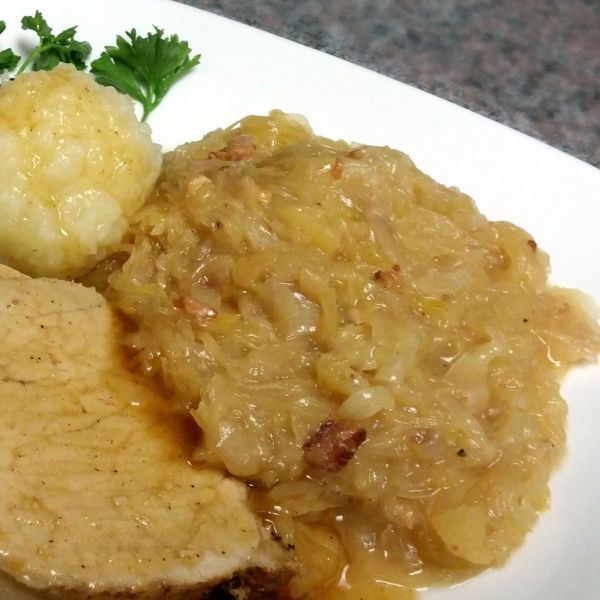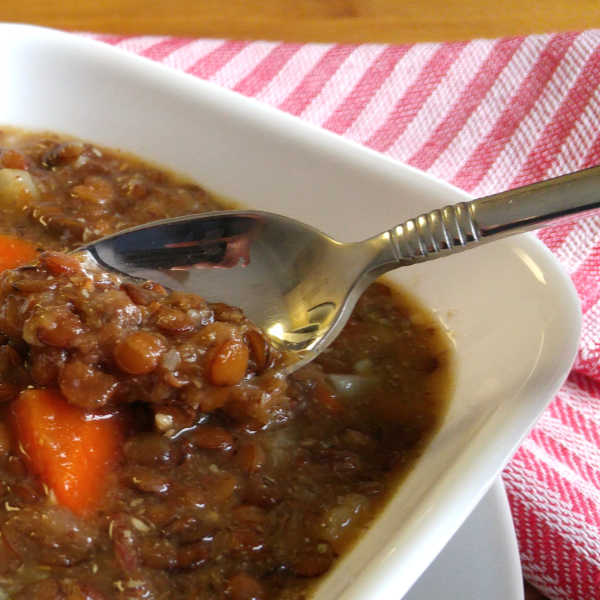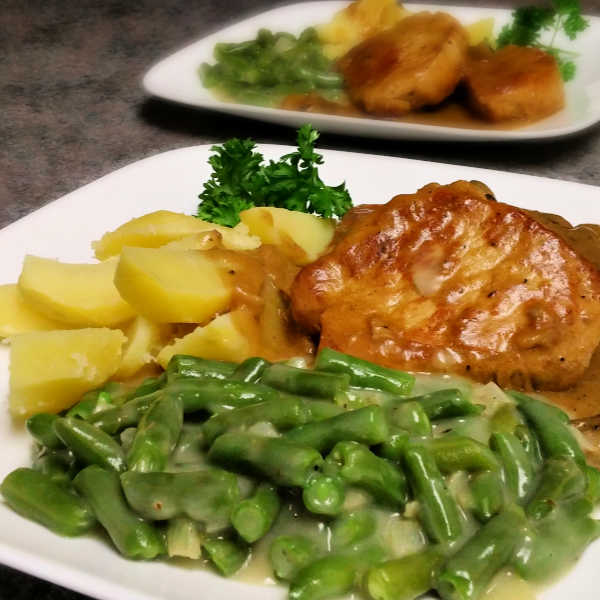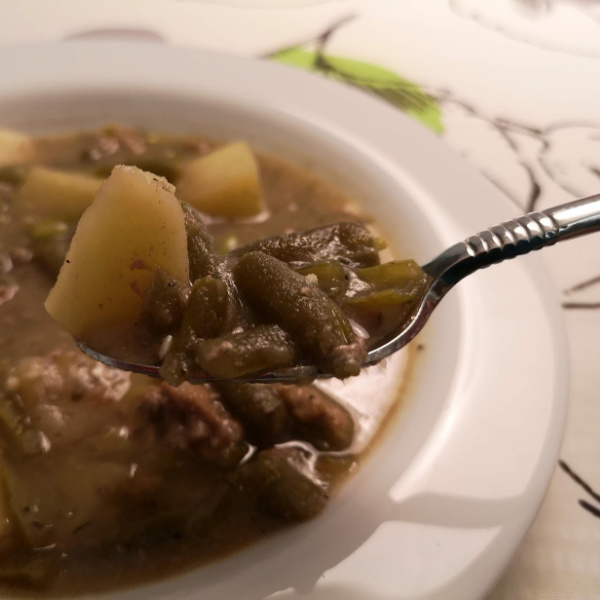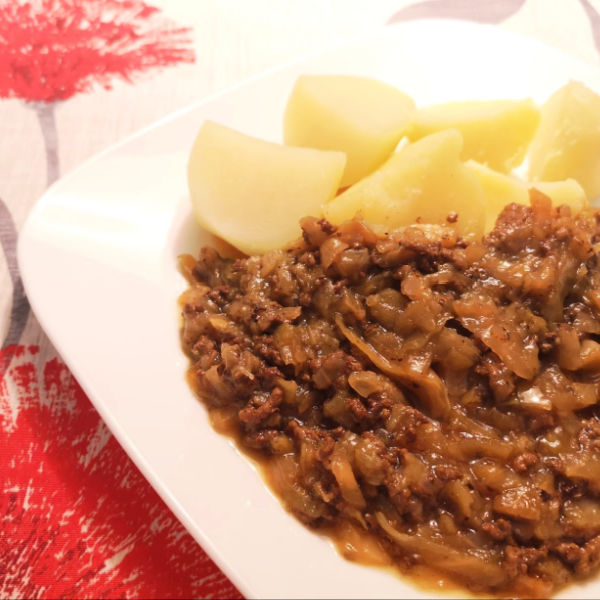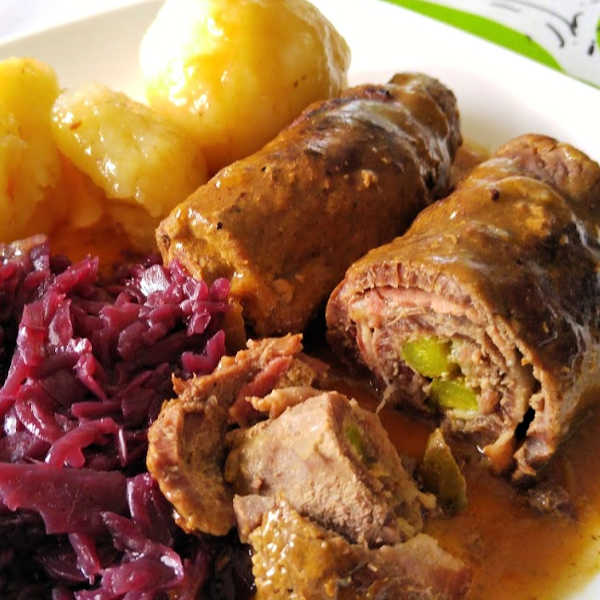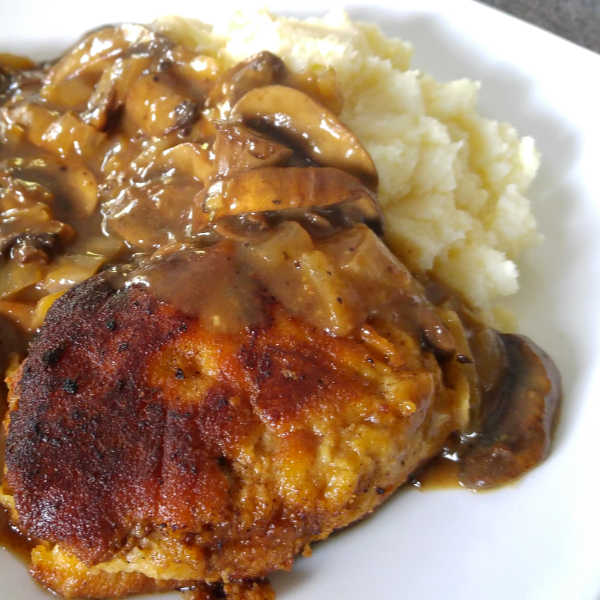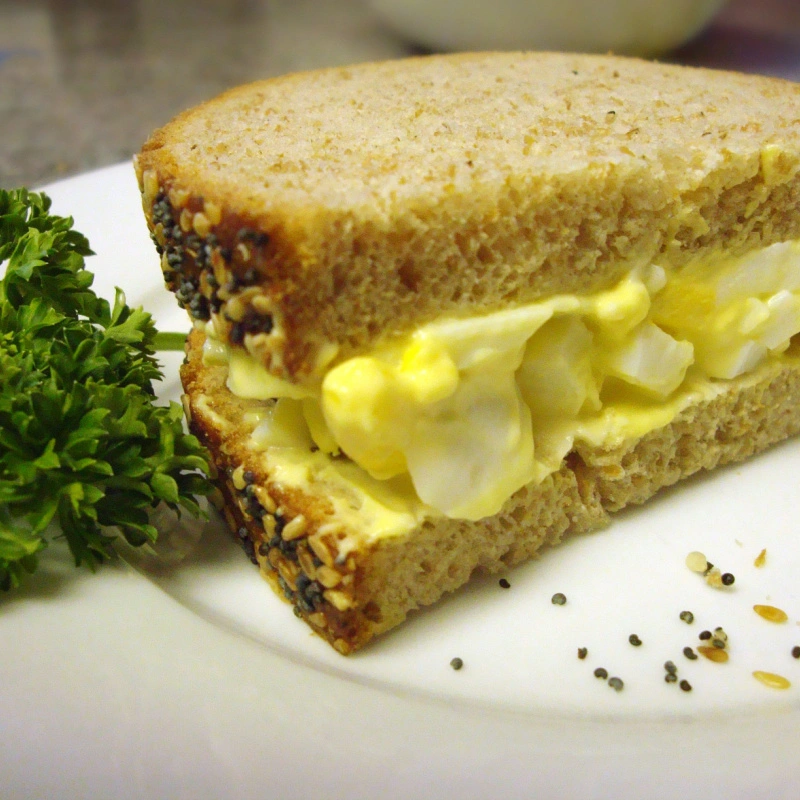Our thank you sale is on now - save 10% off any item, or 15% off two or more!
- Home
- German Food Guide
German Food Guide: Best Foods in Germany to Try at Home
By: Gerhild Fulson / Using her extensive experience and cultural knowledge, Oma Gerhild provides trusted, authentic, and easy-to-follow German recipes both here and in her many cookbooks.
I'm often asked about a German food guide that has the most beloved of all the traditional German dishes, including that one dish that most reflects our culture. My answer: there isn't just one. Germany has such a wide range of traditional dishes with their own unique flavors and ingredients that it's hard to choose.
Many people think that German food is just sausages and sauerkraut, washed down with some beer. In actuality, it is SO MUCH MORE. Since Germany is divided into 16 federal states, each with its own unique history and cuisine, the foods eaten differ greatly from one area to the next.
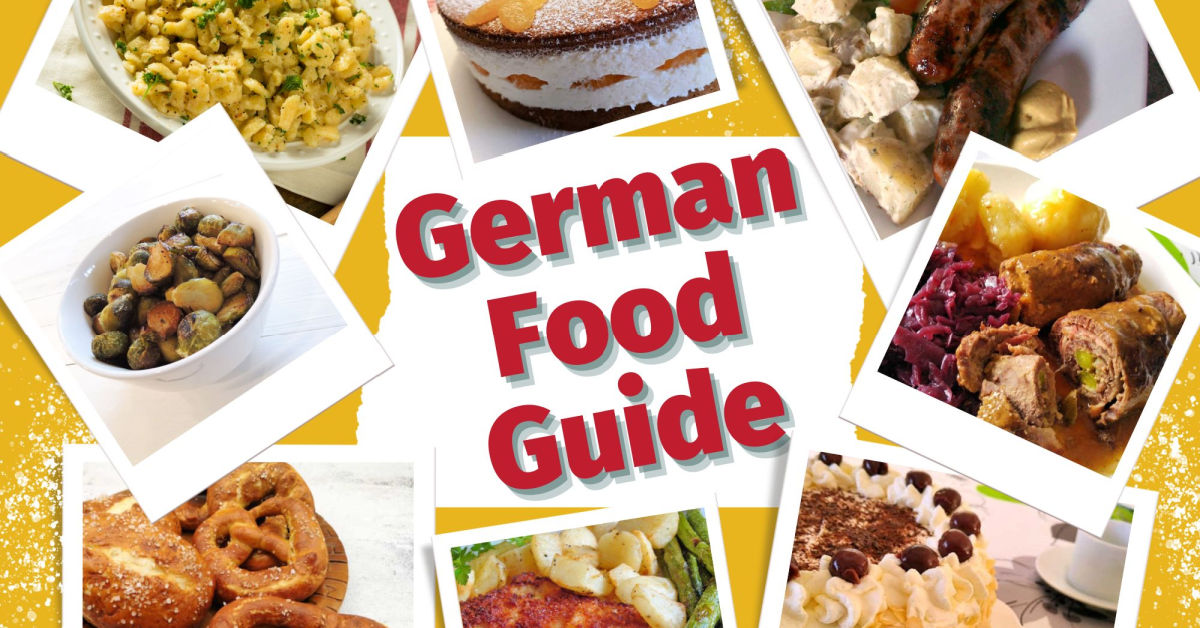
On this page:
Within those 16 states, Germany is also divided into more than 80 different regions based on landscape, which also play a role in the regional variations. And with its location in Central Europe, the countries that share its border, such as France, Austria, and the Czech Republic, have also had an influence on Germany's culinary traditions.
Part of this hodgepodge of geographical and historical backgrounds is what makes traditional German cuisine such an interesting mix of flavors, ingredients, methods, and tastes. But the one thing all German food has in common is heartiness, richness, and deliciousness!
Traditional German Food
Traditional German cooking is centered around delicious meat dishes, such as Rouladen (beef rolls), Sauerbraten (sour roast), and Schweinebraten (pork roast), as well as, of course, many varieties of sausage.
German meats are a staple in our home. We always enjoy munching on something that brings those childhood memories flooding back to mind with every bite. That includes wonderful German side dishes like delicious dumplings, made with either bread or potatoes, and traditional German vegetables like Rotkohl (red cabbage) and sauerkraut. And let's not forget all the delicious gravies and creamy sauces!
And then there's the bread. Germany, with more than 3,200 officially recognized types of breads in the country, is now considered the bread capital of the world! Among all the different types of breads are Brötchen, one of the most missed items by those who no longer live in Germany.
Finally, the sweet taste of a delectable German dessert like Apfelstrudel (apple strudel), Marzipan, Blitz Torte (Lightning Cake), Käsekuchen (German cheesecake), and possibly the most popular German food, Schwarzwälder Kirschtorte (Black Forest Cake) is all that's needed to finish off that wonderfully traditional meal.
German Food Festivals
German food festivals are absolutely incredible! From the world-famous Oktoberfest in Munich to the Asparagus Festivals or the lively Volksfeste – the atmosphere is fun and lively, with music, dancing, and plenty of good food. Think crispy schnitzels, sizzling bratwursts, freshly baked pretzels, and, of course, that stein of frothy beer.
These events not only serve scrumptious dishes, but also showcase the vibrant German culture and traditions. So, put on your eating pants and get ready for an unforgettable culinary experience at these festivals! Prost!
 See the festivals >
See the festivals >Making German Food Outside of Germany
There's nothing quite like homemade German food. However, many traditional recipes require many hours to prepare and cook, as well as ingredients not commonly found outside of Germany. Since I'm a very busy Oma, I’ve experimented and discovered easier methods and alternative (local) ingredients to get the same or similar results for many German dishes.
Now, these meals don’t always taste exactly like the original ones, but that's okay! Sometimes it's just impossible to make them exactly the way they are made in Germany simply because of a lack of access to the right ingredients, such as the right kind of potato, the right type of flour, the right kind of bacon, etc. BUT! If you are willing to compromise a little, you too can re-create traditional German food no matter where in the world you call home.
Modern German Cuisine
Of course, German cuisine has evolved over the years, same as everywhere else. While modern dishes are still based on local and seasonal ingredients, they are also influenced by international food and cooking techniques, thanks to the ease of modern travel.
Also growing in popularity are vegetarian and vegan dishes. According to vegconomist.com, a study found that Germany has the most vegans, with the number having doubled from 1.3 million in 2016 to 2.6 million in 2020 — a total of 3.2 percent of the population. Denmark and Switzerland were in second and third place, with 2.7 and 2.6 percent of the population identifying as vegan, respectively.
Of the top 15 most popular cities for vegans in 2020, four of them are in Germany: Hamburg, Berlin, Leipzig, and Cologne, with Berlin being known as the vegan capital of Europe and was even voted the vegan capital of the world in 2017.
Touring Germany Through Regional Recipes
My hubby and I both immigrated to Canada with our parents as small children. In 2006, we took our very first trip back to Germany and experienced five fantastic weeks touring through all the different regions of our birth country by bus. It was such a wonderful adventure, one we will never forget.
Since we share a passion for photography and all things German (especially German food!), exploring the breathtaking scenery and stumbling upon some of the best places to eat was a blessing that filled us with so much joy.
Touring throughout the country was indeed a delicious adventure, one that I invite you on now!
A German Food Guide Through All 16 States:
Allow me to guide you on a brief tour of all 16 Bundesländer (federal states). As I do, picture yourself there; imagine the stunning sights, the bustling sounds, and the tantalizing mouth-watering aromas of both traditional and modern foods.
Then go, grab your apron, gather all the ingredients, and get ready to experience a little bit of German culture as you re-create these mouthwatering German dishes right from the comfort of your home.
Baden-Württemberg
Located in southwestern Germany, Baden-Württemberg is known as the Sunny Side of Germany. This is because it gets more sunshine than the rest of the states. It is the second most popular tourist destination and is known for its gourmet restaurants that use local ingredients, such as white asparagus, its most famous food. It is often called white gold and there's even a whole festival dedicated to it.
There is so much to do and explore in this sunny state: visit Germany’s largest theme park, Europa-Park, for some thrill-seeking adventures; enjoy a leisurely stroll through Mainau, the flower island in Lake Constance; take a hike through the picturesque Black Forest; enjoy a day of shopping at the Outletcity Metzingen; or join in the excitement of a pumpkin regatta – yes, you get to race in a giant pumpkin – at Ludwigsburg Castle.
Now, get ready to cook some of the wonderful meals enjoyed throughout the state of Baden-Württemberg.
German Food Guide Recipes from Baden-Wüttemberg:
- Spargelsalat (Asparagus Salad)
- Spargelsuppe (Asparagus Soup)
- Weißer Spargel mit Soße Hollandaise (White Asparagus with Hollandaise Sauce)
- Spätzle (Egg Noodles)
- Käsespätzle (German Mac & Cheese, only better!)
- Flammkuchen (Onion and Bacon Tart)
- Flädlesuppe (Pancake Soup)
- Gaisburger Marsch (Beef and Veggie Stew)
- Schwarzwälder Kirschtorte (Black Forest Cake)
- Maultaschen (Stuffed Pasta)
- Zwiebelkuchen (Caramelized Onion Tart)
Bavaria
If you love adventures, then a visit to Bavaria, the largest state in Germany, is a must. There is so much to do there: enjoy a day of skiing at Zugspitze’s glacier, climb the majestic Berchtesgaden Alps, wander through the fairytale-like Neuschwanstein Castle, stroll through the picturesque vineyards of Franconia, and enjoy a leisurely day of shopping at Nuremberg’s Christmas market.
Immerse yourself in Bavarian culture by dressing up in traditional Lederhosen or Dirndls; by participating in thrilling Fastnacht festivities, like sledge racing; or by joining in the rip-roaring Schuhplattln, a thigh-, sole-, and hand-clapping folk dance.
And, let’s not forget about Oktoberfest, the largest German beer festival in the world! For two weeks each year, six million people travel to Munich to take part in the festivities and enjoy, along with the ever-present beer, a vast array of scrumptious Bavarian foods like pretzels, roasted pork hocks, sauerkraut, and many varieties of sausage to name a few. Thankfully, these yummy foods are easy enough to make at home!
GERMAN FOOD GUIDE Recipes from Bavaria:
- Brezeln (Pretzels)
- Bayerisches Weisskraut (Bavarian White Cabbage)
- Kartoffelsuppe (Potato Soup)
- Steckrübensuppe (Turnip Soup)
- Semmelknödel (Bread Dumplings)
- Leberknödelsuppe (Liver Dumplings Soup)
- Schweinshaxe (Roasted Pork Knuckle)
- Weisswurst (White Sausage)
- Brathendl (Roast Chicken)
- Apfelstrudel (Apple Strudel)
- Kaiserschmarrn (Torn Pancakes)
- Lebkuchen (Gingerbread Bars)
- Lebkuchen Kekse (Gingerbread Cookies)
- Pfefferkuchenhaus (Lebkuchenhaus) (Gingerbread House)
Berlin (city-state)
Welcome to Berlin, Germany’s vibrant capital and largest city, where antiquity and modernity come together! Berlin may be one of the country’s smallest states, but it has so much to offer. It is the perfect place to enjoy both culture and nature. Roam through its beautiful parks, gardens, palaces, museums, and art galleries. Then savor culinary treats from around the world in the countless restaurants and Imbisse (snack bars).
Revel in the breathtaking scenery on a relaxing river cruise or from up high in a hot-air balloon. Take a guided bike tour through the city, then enjoy some shopping as you explore the malls and the famous Kurfürstendamm boulevard. While you’re at it, be sure to sample Berlin’s most popular street food: the Currywurst and the Döner Kebab. Yum!!
There are so many festivals to enjoy throughout the year as well, such as: Berlinale, the world’s second largest film festival; and Advent, with more than twenty Christmas markets to explore during the holiday season.
In spite of the international influence on local cuisine and the growing popularity of vegetarian and vegan dishes, traditional Berliner recipes are still celebrated. These are the traditional hearty foods I grew up with and I look forward to sharing them with you!
GERMAN FOOD GUIDE Recipes from Berlin:
- Kartoffelsuppe (Potato Soup)
- Frikadellen (German Hamburgers)
- Berliner (German Donuts)
- Königsberger Klopse mit Sosse (Meatballs with Sauce)
- Traditional German Schnitzel
- Kasseler (Smoked Pork Chops)
- Kalbsleber und Zwiebeln (Calf Liver and Onions)
- Hoppel Poppel (a popular dish for using up leftovers)
- Eisbein und Sauerkraut (Pork Hocks and Sauerkraut)
- Schweinekoteletts mit Sauerkraut (Pork Chops with Sauerkraut)
- Currywurst (German Sausage Topped With Curry-Tomato Sauce)
Brandenburg
Brandenburg, which surrounds Berlin, is the perfect place for your next water adventure with its 18,600 miles (30,000 km) of waterways and 3,000 lakes. Have fun wakeboarding or explore by canoe or houseboat. Or perhaps take a punt through the enchanting labyrinth of streams throughout the famous Spreewald Forest.
If you prefer to stay on land, you can hop on a bike and explore more than 4,000 miles (6,400 km) of cycle routes. For an extra treat, take an e-bike adventure along the 160-mile (260-km) Gurkenradweg (Gherkin Cycle Path) and learn all there is to know about the famous Spreewald gherkins.
The foods enjoyed by Brandenburgers, including those gherkins, reflect its recent history as part of East Germany, as well as its diverse landscape, using what is locally grown and harvested. Known as Berlin’s Vegetable Garden, this region (where potato dishes abound!) is celebrated for its down-to-earth cooking, just like Oma’s kitchen.
GERMAN FOOD GUIDE Recipes from Brandenburg:
- Gurkensalat (Cucumber Salad)
- Kartoffelsalat mit Mayo (German Potato Salad with Mayo)
- Kartoffelklöße (Potato Dumplings)
- Falscher Hase (Meatloaf)
- Kohlrouladen (Cabbage Rolls)
- Blumenkohl mit Semmelbrösel (Cauliflower with Buttered Crumbs)
Bremen (city-state)
This charming city-state may be the smallest of all German states, but Bremen has many wonderful experiences to offer. Take, for instance, its historical market square. The town hall, built in 1405, features the 600-year-old statue of Roland, a knight with his sword drawn, symbolizing freedom and independence.
On the other side of the square, you’ll find an interesting manhole cover where, if you stoop down to listen, you’ll hear the crowing, meowing, barking, and hee-hawing of the Bremen Town Musicians, whose bronze sculpture stands nearby.
Make your way below the town hall where you’ll find the Ratskeller, a historical restaurant known for its famous 1653 vintage cask rose wine. Though you won’t find it on the menu, you will find plenty of other wines and traditional Bremen fare to savor and enjoy.
With Bremen’s geographical proximity to the North Sea and Weser River, it has enjoyed easy access to foreign markets, which has greatly influenced the local cuisine. You’ll find a delightful hodgepodge of cookery that is sure to satisfy: sweet, spicy, and exotic; curry, coffee, and chocolate. Yum!
GERMAN FOOD GUIDE Recipes from Bremen:
- Heringsalat (Herring Salad)
- Kartoffel-und-Kohlsuppe (Potato and Cabbage Soup)
- Rote Grütze
- Haschee (Ground Beef Sauce)
- Birnen, Bohnen, und Speck (Pears, Beans, and Bacon)
- Kükenragout (Chick Ragout)
- Grünkohl und Pinkel (Kale and Sausages)
Hamburg (city-state)
Hamburg is a vibrant city known as the Gateway to the World, thanks to its international harbor. Having enjoyed access to an array of spices and foreign foods for centuries has created a truly distinctive cuisine that beautifully melds new foods with traditional ones. Yet the old classics are still cherished and enjoyed to this day.
Join in with millions of other visitors at any of the three annual volksfeste (festivals) held at Heiligengeistfeld (also known as Holy Spirit Field) or embark on a harbor cruise during Hafengeburtstag (a celebration that commemorates the “birth” of the harbor in 1189) to enjoy Hamburg’s traditional fare.
With so many wonderful places to visit and explore, from the impressive Miniatur Wunderland featuring the world’s largest model railway to the platform near the top of St. Michael’s Church with breathtaking views of the harbor and surrounding countryside, you’ll soon find yourself hungry and eager to chow down on some Hamburg classics of your own.
GERMAN FOOD GUIDE Recipes from Hamburg:
- Bratkartoffeln (Fried Potatoes)
- Kartoffel-und-Heringsalat (Potato and Herring Salad)
- Himmel und Erde (Mashed Potatoes and Apples)
- Sauerbraten (Marinated Braised Beef)
- Frikadellen (Hamburg's Hamburgers)
- Labskaus (Corned Beef Hash)
Hesse
Once upon a time, and throughout the centuries, the region of Hesse has been home to many cultures, such as the Celts, Chatti, ancient Romans, Saxons, Franks, and Prussians. It feels like an otherworldly place where history, with its majestic castles and fearless knights, meets the enchanted tales of the Brothers Grimm set in the Reinhardswald Forest, including Sleeping Beauty's Sababurg Castle.
Almost half of Hesse is covered with woodlands. Perhaps this is why for centuries the city of Frankfurt has celebrated Wäldchestag (Forest Day). Join in the festivities and savor a picnic in the forest, enjoy the exhilarating rides at the fun fair, and sample delicious fare from a vast array of food stalls.
Located in the heart of the country, Hesse connects northern and southern Germany. This is reflected in its cuisine, as it is a mixture of both. However, there are local dishes that are unique to this region that are easy to re-create in your own kitchen and that have today’s Saxons, Franks, and Prussians living happily ever after.
GERMAN FOOD GUIDE Recipes from Hesse:
- Apfelschorle (Apple Spritzer)
- Bratäpfel (Baked Apples)
- Grüne Sosse (Green Sauce)
- Bethmännchen Kekse (Marzipan Cookies)
- Hähnchen Cordon Bleu (Chicken Cordon Bleu)
- Bäckerkartoffeln (Scalloped Potatoes)
- Schweinepfeffer (Marinated Spiced Pork)
Lower Saxony
Lower Saxony is the place to visit for an out-of-the-ordinary holiday. Picture yourself in a race across the tidal flats of the Wadden Sea in Schlickschlitten (special mud sleds) during the annual Ostfriesischen Wattspiele (East Frisian mudflat games). How exciting! Or, if you love water adventures and beautiful scenery, there are over twenty rivers to explore by kayak.
Imagine immersing yourself in the soothing saltwater thermal baths of Lüneburg. If you love wildlife, visiting Weltvogelpark Walsrode, the world’s largest bird park located right in the middle of the Lüneburg Heath, is a must. You can also participate in Hannover’s Schützenfest (marksmen festival), even if all you do is indulge in delicious food from the dozens of snack bars!
Join in with two million other visitors at the Maschsee Lake Festival for an unforgettable experience at Germany’s largest open-air arena with music, entertainment, and an array of culinary specialties.
And then, of course, there's the famous legend of the Pied Piper and the rats … that's what I think of when Lower Saxony comes to mind.
With its thrilling adventures and enchanting traditions, this amazing region is also known for its delicious gourmet food: duck, lamb, and yes, even rat tails! Delicious German food awaits you here, and in your kitchen.
GERMAN FOOD GUIDE Recipes from Lower Saxony:
- Spargelsalat (Asparagus Salad)
- Entenbraten (Roast Duck)
- Gulaschsuppe (Goulash Soup)
- Hamelner Rattenschwänze (Hamelin "Rat Tails"!)
- Versunkener Apfelkuchen (Sunken Apple Cake – perfect for Kaffee und Kuchen!)
Mecklenburg-Vorpommern
Mecklenburg-Vorpommern is home to more than two thousand lakes and 1,200 miles (2,000 km) of coastline, so get ready to embark on wonderful water adventures like sailing, canoeing, rafting, kiting, and even beach parties.
This state is also full of architectural wonders and history with more than two thousand palaces, castles, and manor houses, many of which you’ll find hidden around the many lakes. Enjoy centuries-old buildings with their Gothic brickwork as you stroll through the historic town centers of Wismar and Stralsund. Take a trip to the capital, Schwerin, and enjoy a breathtaking tour of its spectacular fairy-tale castle situated on an island in the city’s main lake, Lake Schwerin.
Then there are museums to explore, such as the one in Stralsund where Viking gold is displayed or the Vorpommersches Kartoffelmuseum in Tribsees, a museum entirely dedicated to the revered potato.
And let’s not forget about the delicious traditional cuisine of this beautiful northeast corner of Germany; you’ll find hearty and down-to-earth dishes that are heavily influenced by what is caught in the lakes, what is hunted in the forests, and what is grown in the fertile soil. Fish dishes are prevalent, beets are a delicious and popular ingredient, and when it comes to meat, pork is king.
GERMAN FOOD GUIDE Recipes from Mecklenburg-Vorpommern:
- Grünkohl mit Speck (Kale with Bacon)
- Schweinebraten (Roast Pork)
- Blumenkohl-Bombe (Cauliflower Bomb with Ground Meat and Bacon
- Hühnerfrikassee (Chicken Fricassee)
- Rote-Bete-Suppe mit Stampfkartoffen (Red Beet Soup with Mashed Potatoes)
- Steckrübeneintopf (Rutabaga/Turnip Stew)
North Rhine-Westphalia
The merging of two provinces in 1946 into North Rhine-Westphalia introduced an interesting mix of culinary traditions. The Westphalians had a fondness for hearty dishes while the Rhinelanders had an affinity for sweet-and-sour combinations. The coming together of these two regions created a wonderful melting pot of flavors that will entice even the pickiest of eaters.
Indulging in delicious food and cultural wonders is what you'll do as you travel throughout this beautiful state. There are wonderful historical fairs to visit that are centuries old, such as the Rheinkirmes in Düsseldorf, a fun fair that goes all the way back to 1453; the Pützchens Markt in Bon, which dates back to the 1300s; or one of the oldest and most traditional of all folk festivals, the Haaner Kirmes, believed to have existed since the ninth century.
These fairs are great places to learn about the culture and history of the region, to enjoy a vast array of culinary delights along with all kinds of entertainment, and to be a part of something special that has delighted people for centuries.
GERMAN FOOD GUIDE Recipes from North Rhine-Westphalia:
- Blumenkohl mit Butterbröseln (Cauliflower with Buttered Bread Crumbs)
- Lauchsuppe (Leek Soup)
- Mohrrübensuppe (Carrot Soup)
- Reibekuchen (Potato Pancakes)
- Kartoffelsalat ohne Mayo (Potato Salad without Mayo)
- Kohlrabi mit Schinken (Kohlrabi with Ham)
- Düsseldorfer Schweinekotelett (Düsseldorf Pork Chops)
- Waffeln (Waffles)
Rhineland-Palatinate
Rhineland-Palatinate is home to the oldest city in Germany: Trier. Trier was founded by the Celts before the first century BC and boasts nine UNESCO World Heritage Sites. If you love history, this is the place to visit. Then head over to Deidesheim for a bit of fun at the historical Geissbock (billy goat) auction, a tradition that dates back to 1404.
While you’re here, at least one cruise down the picturesque Rhine or Moselle is a must: there are enchanting castles at almost every bend, terraced vineyards high up on the slopes, and fairytale-like villages along the banks. Then stop off in Bad Dürkheim for the Wurstmarkt wine festival — the world's largest that dates all the way back to 1417 — and see if you can figure out why it's called Wurstmarkt (sausage market).
Another absolute must is enjoying a meal at a local Gaststätte (restaurant) where you'll find so many enticing and mouthwatering dishes on the menu. Once you’ve tasted the local cuisine, you'll be eager to cook them all once you are back home in your own kitchen.
GERMAN FOOD GUIDE Recipes from Rhineland-Palatinate:
- Pflaumenstreusel (Plum Crumble)
- Sauerbraten mit Rosinen (Marinated Beef with Raisins)
- Döppekooche (Potato Casserole with Bacon)
- Schinkennudeln (Ham and Noodles)
- Kartoffelpuffer (Potato Pancakes)
- Schneebällchen (Potato Dumplings)
Saarland
Here, in Saarland, is where the cultures of France, Luxembourg, and Germany have intertwined for two thousand years. It’s a wonderful place with much to experience.
For starters, you can explore the excavated and reconstructed Roman Villa Borg in Perl. Next, move on to Otzenhausen and immerse yourself in the history of the Ring of the Huns, one of the largest Celtic fortresses in Europe. Then, travel along the Baroque Road for magnificent views of seventeenth- and eighteenth-century castles and imperial residences. Meander through the largest man-made mottled sandstone caves in Europe, right under the ruins of the Hohenburg Castle. Finish off with a breathtaking tour through the picturesque river valleys, charming villages, lush forests, and stunning vineyards.
But, let’s not forget about the food! Saarland is renowned for its top chefs, food aficionados, and Michelin stars. You’ll find many dishes that have been influenced by both French and local cuisine, such as Dibbelabbes (Potato Hash with Leeks) – a dish that is both gourmet and rustic at the same time. The one exception is the Villa Borg where only the original recipes written by Apicius, the Roman gourmet from the first century AD, are made.
GERMAN FOOD GUIDE Recipes from Saarland:
- Dibbelabbes (Baked Potato Pancake)
- Arme Ritter (German French Toast)
- Pflaumen-Streuselkuchen (Plum Crumble Cake)
- Schnitzel mit Champignon-Sosse (Schnitzel with Mushroom Sauce)
- Schweineschmorbraten (Braised Pork Roast)
Saxony
Welcome to the cultural capital of Germany! Saxony has much to offer: embark on a journey aboard one of the oldest paddle steamers in the world down the Elbe River with its gorgeous landscape adorned with castles and baroque buildings; tour the magnificent Zwinger Palace, one of the most iconic landmarks in Germany; or stroll along Augustusstrasse where you’ll happen upon one of the biggest and most impressive ceramic murals in the world made from twenty-three thousand Meissen tiles.
Immerse yourself in the region’s musical history (think Bach, Mendelssohn, Schumann, and Beethoven) as you make your way along the Leipzig Music Trail and discover the places where these and other famous composers lived and performed. For an unforgettable experience, take the lift up to Festung Königstein, an unconquered fortress on a hilltop overlooking the breathtakingly beautiful Saxon Switzerland National Park. Or, visit in December and get in the holiday spirit as you roam through Dresden’s Striezelmarkt, Germany’s oldest Christmas market, filled with traditional holiday tastes and delights.
Also renowned as Germany's bakery, Saxony is where sweet treats with coffee abound. And the cuisine is such a delightful culinary experience; it mingles traditional German cooking with Sorbian and Bohemian flavors, which, thankfully, is easy to re-create at home!
GERMAN FOOD GUIDE Recipes from Saxony:
- Quark mit Salzkartoffeln (Quark with Boiled Potatoes)
- Bienenstich (Bee Sting Cake)
- Pfefferkuchen (Gingerbread)
- Eiskaffee (Iced Coffee Over Vanilla Ice Cream)
- Mohnkuchen (Poppy Seed Cake)
Saxony-Anhalt
As you travel through this state, which boasts the most UNESCO World Cultural Heritage Sites in Germany, you will find that there is so much history and beauty to explore.
A great place to start is on the hiking trails of the picturesque Harz Mountains, where you can enjoy the beauty of the rugged granite cliffs and the misty moors. Be sure to stop and roam through the old medieval towns along the way, such as Quedlinburg with its thirteen hundred half-timbered houses. Then hop on board the Harzer Schmalspurbahn (Harz Narrow Gauge Railway) and take an unforgettable journey up the Brocken, the topmost peak in northern Germany.
Or immerse yourself in the historical and astronomical wonders of Saxony-Anhalt on the Sky Paths route where you’ll discover archaeological findings, such as the Pömmelte Woodhenge, known as Germany’s Stonehenge, as well as the Nebra Himmelsscheibe (Sky Disc) which is the oldest known depiction of the heavens and considered one of the most important finds of the past century.
When it comes to food, you'll soon learn that root vegetables and cabbage dishes abound, including the world-renowned sauerkraut. But there is much more to Saxony-Anhalt's cuisine: hearty stews, traditional meat dishes, and delectable chocolates and cakes that will leave your taste buds wanting more.
GERMAN FOOD GUIDE Recipes from Saxony-Anhalt:
- Grünkohl und Wurstsuppe (Kale & Sausage Soup)
- Sauerkraut
- Bratwurst (Sausage)
- Sauerkrautsuppe (Sauerkraut Soup)
- Schusterpfanne (Shoemaker's Pan)
- Tiegelbraten (Beef and Lamb Pot)
Schleswig-Holstein
A place where Vikings, knights, and pilgrims once roamed, “Moin, moin!” is the warm greeting you’ll receive when you travel to this most northern German state. With its location between the stormy North Sea and the relatively calm Baltic Sea, you’ll find the perfect places to hike, bike, and relax amongst its diverse landscape of forests, moors, and hills.
For instance, enjoy the beautiful scenery as you cycle along the North Sea coastline, starting at the Wadden Sea with its tidal flats all the way to the cliffs of the Baltic Coast. Or, pedal alongside the famous Kiel Canal, and, if you’ve timed your visit right, arrive just in time for Kieler Woche where, along with millions of other people, you’ll get to witness the world’s largest sailing event. Not only that, but you’ll also get to enjoy the festive music as you indulge in both local and foreign cuisine.
As you travel throughout Schleswig-Holstein, you’ll enjoy the hearty dishes that abound thanks to the bountiful harvest from land and sea. Whether you find yourself in a cozy Gasthaus or gourmet restaurant, you’ll look forward to re-creating the wonderful meals in your own kitchen to share with family and friends.
GERMAN FOOD GUIDE Recipes from Schleswig-Holstein:
- Linsensuppe (Lentil Soup)
- Blitz Torte (Lightning Cake)
- Lammeintopf (Lamb Stew)
- Gestovte Bohnen (Creamed Green Beans)
- Bauerntopf (Farmer's Pot — Ground Beef Stew)
- Brötchen (German Rolls)
- Kohlrouladenauflauf (Unstuffed Cabbage Roll Casserole)
Thuringia
The state of Thuringia is known as the Green Heart of Germany thanks to its almost endless forests. It boasts more than 10,000 miles (16,000 km) of marked hiking trails, including a thrilling treetop trail through the lush canopy of the Hainich National Park, one of the few remaining primeval forests in Central Europe.
You will find that majestic castles and palaces abound here as well. The most famous of these is Wartburg Castle, Martin Luther’s place of refuge during his exile.
The city of Weimar, which was named the Cultural Capital of Europe for 1999, is a wonderful place to visit with its museums and galleries that pay homage to some of the greats, such as Goethe, Schiller, Liszt, and Gropius. For a little bit of food history, the original 1613 recipe for the Thüringer Bratwurst is kept in Weimar’s State Archive, and you can learn more about this beloved sausage at the Bratwurstmuseum in Holzhausen.
And then, there is the potato dumpling, a very popular German food, especially in Thüringia. After all, Thuringians say that “a Sunday without potato dumplings is no Sunday at all.” That works for me as long as there is rouladen gravy to soak up with these delicious dumplings!
You'll notice I've added rouladen to this state, when in actuality, rouladen are popular throughout ALL of Germany. However, since my Mutti cooked my Papa's favorite foods, and his were rouladen to go along with those Thüringer klöße, I added the recipe for rouladen here :)
GERMAN FOOD GUIDE Recipes from Thuringia:
- Thüringer Klöße (Potato Dumplings from Raw Potatoes)
- Schmorkohl (Braised Cabbage)
- Champignons mit Sahnesosse (Mushrooms with Cream Sauce)
- Apfel-Rotkohl (Red Cabbage with Apples)
- Rouladen (Beef Rolls)
- Eiersalat (Egg Salad)





